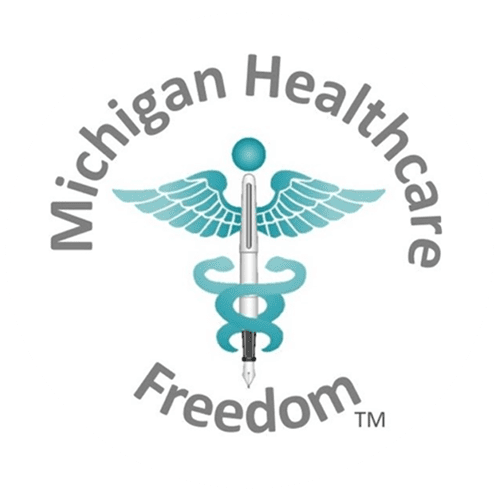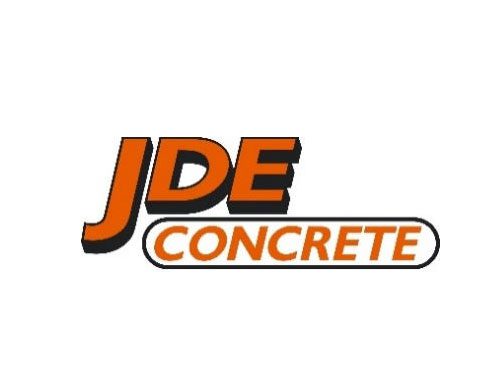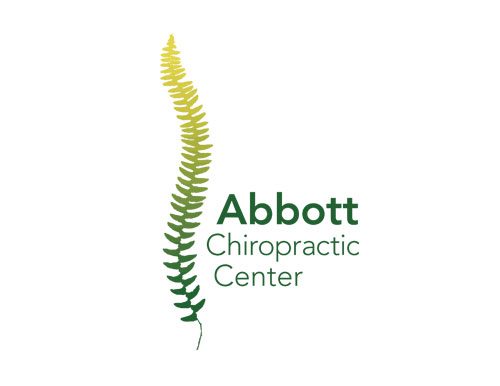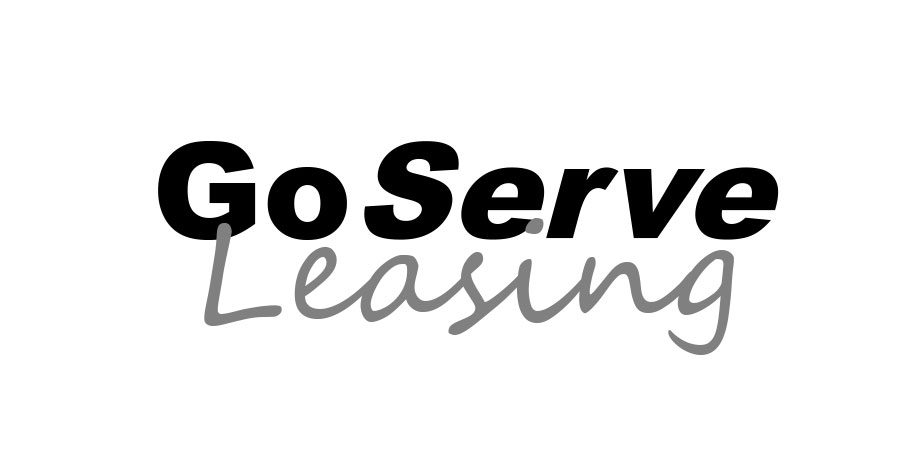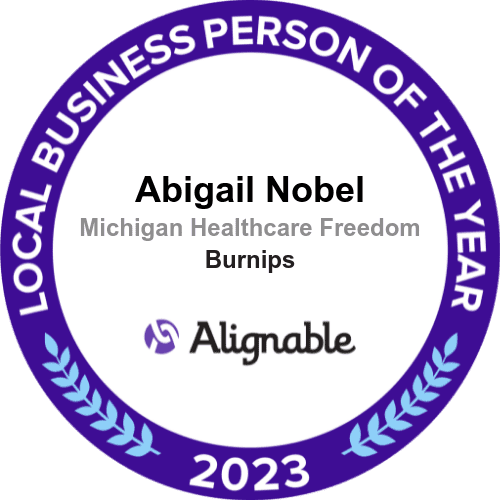
Most of the health care provisions of the OBBBA (One Big Beautiful Bill Act) were amendments to Medicaid law and administrative rules. Here is a long form synopsis of those changes, section by section, including the expected federal savings, from the Paragon Health Institute:
What Made It Into Law: Health Provisions of the One Big Beautiful Bill
By Chris Medrano, Brian Blase and Ryan Long - July 17, 2025Key Takeaways
The One Big Beautiful Bill (OBBB) contains the most substantial conservative reforms to federal health care programs of any legislation in decades. It will save taxpayers’ money, empower patients, reduce improper enrollment and fraud, promote work and personal responsibility, and address incentives that lead states to spend recklessly and skew resources away from the most vulnerable. This summary highlights the bill’s health policy provisions, including relevant Paragon research where applicable.
Provisions That Reduce Improper Enrollment & Fraud, Encourage Work, and Preserve Medicaid
The OBBB includes several provisions that focus on improving Medicaid for the most vulnerable.1 Historically, Medicaid was meant to serve the most vulnerable, but it has drastically expanded so that there are more Americans enrolled in Medicaid with income above the poverty level than there are Americans in poverty. In 2010, the ACA expanded Medicaid to able-bodied, working-age adults with income up to 138 percent of the federal poverty level (FPL). The Biden administration pursued an agenda aimed at maximizing enrollment in public programs regardless of eligibility. These policies resulted in high levels of improper enrollment. Paragon estimates that as many as 6.6 million Medicaid expansion enrollees are improperly enrolled, costing taxpayers billions and straining state resources, which hurts the most vulnerable.2
With the passage of the OBBB, Congress is implementing many important measures to reduce improper enrollment and require able-bodied, working-age Medicaid expansion enrollees to work, volunteer, or engage in training to qualify for the program.
Sec. 71101 – Prohibition on implementation of Biden-era rule relating to eligibility and enrollment in Medicare savings programs. The section would delay implementation of the Biden administration’s misguided rule titled “Streamlining Medicaid; Medicare Savings Program Eligibility Determination and Enrollment” until September 30, 2034. The rule exacerbated improper enrollment with weakened verification standards and lack of coordination for dual enrollment in Medicare and Medicaid.
Section Effective Date: 7/4/2025. (CBO Estimated Ten-Year Savings : $85.3 billion)
Sec. 71102 – Prohibition on implementation of Biden-era rule relating to eligibility and enrollment for Medicaid and CHIP. This provision would delay implementation of the misguided Biden administration rule “Streamlining Medicaid, Children’s Health Insurance Program, and Basic Health Program Application, Eligibility Determination, Enrollment, and Renewal Processes” that made it more difficult for states to remove ineligible enrollees from Medicaid and perpetuated fraud and improper payments.
Section Effective Date: 7/4/2025. (CBO Estimated Ten-Year Savings: $77.7 billion)
Sec. 71103. Reducing duplicate enrollment under the Medicaid and CHIP programs. This provision aims to address the problems of individuals enrolled simultaneously in multiple state Medicaid programs. First, it would require states to use reliable, existing data sources—including address updates from managed care organizations—to track where beneficiaries live. Second, it would require that the Department of Health and Human Services (HHS) create, by 2029, a centralized system to flag individuals enrolled in Medicaid programs in multiple states at the same time. A recent Wall Street Journal report indicated that health insurers received $4.3 billion in duplicate payments for Medicaid enrollees enrolled in multiple states simultaneously from 2019 to 2021.3
Section Effective Date: 10/1/2029. (CBO Estimated Ten-Year Savings: $17.4 billion)
Sec. 71104. Ensuring deceased individuals do not remain enrolled. This provision requires states to check the Death Master File quarterly and remove deceased individuals from the Medicaid rolls.
Section Effective Date: 1/1/2027. (Small impact on budget)
Sec. 71105. Ensuring deceased providers do not remain enrolled. This section requires states to check the Death Master File every quarter and remove deceased providers, codifying current Centers for Medicare and Medicaid Services (CMS) regulations.
Section Effective Date: 1/1/2028. (Small impact on budget)
Sec. 71106. Payment reduction related to certain erroneous excess payments under Medicaid. This provision aims to reduce improper payments in Medicaid by enabling the HHS Secretary to disallow federal payments to states with high improper payment rates. Currently, the Secretary is required to disallow federal monies if the improper payment rate exceeds 3 percent, but the Secretary can issue “good faith” waivers from such disallowances. To date, this disallowance requirement has been completely ineffective. The federal government has never recovered improper payments, even though Medicaid’s improper payment rate in some states exceeds 10 times the 3 percent threshold.4 This provision limits the Secretary’s ability to issue “good faith” waivers. This is a step toward accountability, reducing the risk that waivers become blanket exemptions for chronic state-level noncompliance with federal requirements, particularly around ensuring eligibility requirements are met prior to enrollment.
Section Effective Date: 10/1/2029. (CBO Estimated Ten-Year Savings: $7.2 billion)
Sec. 71107. Eligibility redeterminations. Medicaid enrollees—particularly the able-bodied, working-age adult expansion category—typically have frequent income changes. Many expansion enrollees will be low income for only a few months as they obtain jobs and earn higher income and offers of employer plans, either of which typically disqualify them for Medicaid. The Biden administration prevented states from doing eligibility reviews more than once a year for expansion enrollees, leading to billions in wasteful spending for people who lost eligibility, often due to obtaining new coverage.5 This provision strengthens program integrity by requiring states to check eligibility every six months.
Section Effective Date: 1/1/2027. (CBO Estimated Ten-Year Savings: $58 billion)
Sec. 71109. Alien Medicaid eligibility. This provision would better ensure that Medicaid funds are reserved for eligible individuals by ending federal funding when an individual’s citizenship or immigration status has not been verified. This provision would only allow the following groups to access public benefits as qualified aliens: (1) lawful permanent residents, (2) certain Cuban and Haitian immigrants, and (3) individuals living in the United States through a Compact of Free Association.6
Section Effective Date: 10/1/2026. (CBO Estimated Ten-Year Savings: $6.3 billion)
Sec. 71110. Expansion FMAP for emergency Medicaid. This section would reduce the federal medical assistance percentage (FMAP)—or the share of Medicaid spending paid by the federal government—for emergency services for unlawfully present aliens from 90 percent to the state’s normal FMAP. This would apply to Medicaid expansion states that provide emergency Medicaid coverage for illegal immigrants.
Section Effective Date: 10/1/2026. (CBO Estimated Ten-Year Savings: $28.5 billion)
Sec. 71112. Reducing State Medicaid costs. Currently, most people can enroll in Medicaid when they need medical services and the program will pay for any medical bills they incurred in the prior three months. This policy is referred to as Medicaid’s retroactive coverage. This provision would limit Medicaid retroactive coverage to one month for ACA expansion enrollees and two months for traditional enrollees, counting back from the date of application.
Section Effective Date: 1/1/2027. (CBO Estimated Ten-Year Savings: $4.2 billion)
Sec. 71114. Sunsetting increased FMAP incentive. The American Rescue Plan Act contained a temporary five percentage point FMAP bonus for states that had not yet expanded Medicaid under the ACA if they adopted the expansion. Paragon research has shown that Medicaid expansion worsens Medicaid’s structural problems and diverts resources from the most vulnerable.7 Although current expansion states would retain their bonuses until they end after two years, this change would prevent further use of federal dollars to incentivize expansion in states that have not yet expanded and have decided to prioritize Medicaid for the most vulnerable.
Section Effective Date: 1/1/2026. (CBO Estimated Ten-Year Savings: $12.8 billion)
Sec. 71119. Requirement for States to establish Medicaid community engagement requirements for certain individuals. This provision would require states to implement community engagement requirements for able-bodied adults without dependents younger than 14—a reform Paragon has long supported.8 Individuals meet the requirement by working, studying, volunteering, or participating in job training for 80 hours per month. This reform prioritizes work over welfare for able-bodied, working-age adults. It preserves resources for the most vulnerable while promoting work, education, and community service. The provision would take effect on January 1, 2027, with flexibility for states that wish to implement the requirements sooner or later, but no later than December 31, 2028. The provision would also create Government Efficiency Development Grants to help states implement the requirements. The provision includes exemptions from community engagement requirements to ensure the policy only targets able-bodied adults without dependents younger than 14. It exempts pregnant women, children, seniors, medically frail individuals, parents with children younger than 14, caregivers, certain seasonal workers, and those already meeting work requirements under Temporary Assistance for Needy Families or the Supplemental Nutritional Assistance Program.
Section Effective Date: No Later Than 1/1/2027. (CBO Estimated Ten-Year Savings: $317.1 billion)
Sec. 71120. Modifying cost sharing requirements for certain expansion individuals under the Medicaid program. This provision would require states to implement modest cost-sharing for Medicaid expansion adults with incomes above 100 percent FPL, with exemptions for certain services, including primary care, prenatal care, pediatric services, substance use disorder services, and services from Federally qualified health centers, certified community behavioral health clinics, rural health clinics, and emergency services. It also provides $15 million to CMS for implementation funding. Modest copayments can help reduce low-value care and fraud, and this flexibility allows states to learn from each other. The ACA requires cost-sharing in exchange plans for enrollees above 100 percent FPL, so this provision would better align cost-sharing requirements for individuals with incomes above 100 percent FPL in the Medicaid program with those in exchanges in the same income bracket.
Section Effective Date: 10/1/2028. (CBO Estimated Ten-Year Savings: $7.5 billion)
Provisions That Improve Long-Term Care Policy
Paragon has previously written about how Medicaid’s long-term care (LTC) policies strain the program, are easily gamed by the wealthy, and crowd out more cost-effective models.9 As America’s population continues to age, Congress should find ways to preserve LTC for the most vulnerable. The following two OBBB provisions take steps toward that goal.
Sec. 71108. Revising home equity limit for determining eligibility for long-term care services under the Medicaid program. Federal law allows individuals with significant assets, including substantial home equity, to qualify for Medicaid and have taxpayers cover their LTC costs.10 High home equity exemptions discourage people from using home equity to fund LTC, increasing taxpayer burden. High asset exemptions, such as for home equity, enable the affluent to “spend down” to qualify for Medicaid, essentially using countable assets to purchase exempt assets that do not affect eligibility. In some states, individuals exempt nearly $1.1 million of home equity from these limits. This provision caps the amount of home equity states can exempt from Medicaid asset tests at $1 million.
Section Effective Date: 1/1/2028. (CBO Estimated Ten-Year Savings: $195 million)
Sec. 71111. Moratorium on implementation of rule relating to staffing standards for long-term care facilities under the Medicare and Medicaid programs. In 2024, the Biden administration mandated a minimum number of nurses per resident in nursing homes. These one-size-fits-all staffing quotas ignored local workforce realities and threatened access to care, especially in rural communities. The rule could have forced some facilities to reduce admissions or close entirely. This provision would place a moratorium on this rule through 2034 and in doing so would better protect access to care and restore flexibility for providers to meet patient needs.
Section Effective Date: 7/4/2025. (CBO Estimated Ten-Year Savings: $23.1 billion)
Provisions to Address Medicaid Money Laundering
These provisions address both the supply and demand sides of Medicaid’s money laundering apparatus, which Paragon has researched extensively.11
Sec. 71115. Provider taxes. The federal government permits states to tax classes of providers up to 6 percent of their revenue and use that revenue as the state share of Medicaid to draw down federal dollars. Paragon has identified provider taxes as a central component of Medicaid’s legalized money laundering apparatus. This provision froze existing provider tax rates in all states as of July 4, 2025, meaning that states or units of local government cannot raise additional revenue through provider taxes to draw down federal dollars.
In Medicaid expansion states, the OBBB phases down the hold harmless threshold, thereby reducing the fuel for the Medicaid money laundering machine. This is particularly important given that expansion states benefit from a $9 federal match for every $1 of state spending on expansion enrollees. Some states are financing their expansion entirely through provider taxes without any legitimate state funding. The phase down mirrors an Obama Administration budget proposal, but rather than phase down to 3.5 percent in three years, the OBBB phases down to 3.5 percent over five years.12 Under the OBBB, the 6 percent safe harbor threshold would begin to decline by 0.5 percentage points per year in 2028 until it reaches 3.5 percent in 2032. Nursing homes and intermediate care facilities are exempt from the phase down. The legislation appropriates $20 million in funds to the CMS administrator to administer this section.
Section Effective Date: 7/4/2025 for the freeze. (CBO Estimated Ten-Year Savings: $182.7 billion)
Sec. 71116. State directed payments. This section seeks to limit state-directed payments (SDPs), which are Medicaid payments to providers, typically hospital systems, through Medicaid managed care organizations. Provider taxes provide the fuel for these payments, which substantially increased during the Biden administration. The Biden administration issued a rule that SDPs could result in total Medicaid payments up to average commercial rates—amounts that average more than 2.5 times Medicare rates for hospital payments.13 Thus, in many states, for many providers, Medicaid is now paying more than Medicare rates. While this policy raises taxpayers’ costs, it also raises commercial prices as higher commercial prices bring higher payments in Medicaid.14
The provision would limit new SDPs so that total Medicaid payments through insurers, including the SDP, are not more than 100 percent of Medicare rates for states that expanded Medicaid under the ACA and 110 percent of Medicare rates for states that did not expand. Medicaid already employs a similar policy (known as the upper payment limit) in fee-for-service Medicaid. This provision also phases down old SDPs by 10 percentage points per year, starting in 2028 until the payments hit the cap of 100 percent in expansion states and 110 percent in non-expansion states. For states that expand Medicaid after enactment of the OBBB, the 100-percent-of-Medicare limit will only apply to payments made on or after the date of enactment.
Three types of payments, under their current approval, are grandfathered and will be subject to the phase down: 1) payments that the Secretary approved before May 1, 2025; 2) payments to rural providers, which are defined to include special statutory designations for critical access hospitals, sole community hospitals, Medicare-dependent small rural hospitals, low-volume hospitals, and rural emergency hospitals for which prior written approval or a good faith effort to obtain such approval were made prior to the date of enactment, and 3) payments for which a completed preprint was submitted to the Secretary before the OBBB’s enactment date of July 4, 2025.
Section Effective Date: Multiple dates, see above. (CBO Estimated Ten-Year Savings: $149.4 billion)
Sec. 71117. Requirements regarding waiver of uniform tax requirement for Medicaid provider tax. Provider taxes are required to be uniform and broad-based within the provider class. These requirements are aimed at reducing the explicit kickback mechanism of these tax schemes, where the entities that disproportionately bear the burden of the tax are the ones that receive the benefit of higher Medicaid payments. This provision directly targets a core Medicaid financing abuse Paragon has exposed: California’s tax on Medicaid managed care plans that the state used to expand Medicaid to unauthorized immigrants.15 This reform builds on Paragon’s work to end opaque, manipulative financing schemes that inflate federal spending without improving care. This provision would require CMS to tighten the criteria for what counts as a “generally redistributive” tax. In essence, this would prevent states from imposing lower tax rates on low-volume Medicaid insurers or providers and higher rates on those with greater Medicaid volume, since that kind of differential enables the kickback scheme. It requires states with non-compliant taxes to fix them, with flexibility granted to the HHS Secretary to provide a transition period. This provision comes on the heels of a Trump administration proposed rule16 that would accomplish much of this policy and would have required at least two states with particularly egregious provider tax schemes—California and New York—to immediately come into compliance.
Section Effective Date: 7/4/2025. (CBO Estimated Ten-Year Savings: $34.0 billion)
Sec. 71118. Requiring budget neutrality for Medicaid demonstration projects under section 1115. This provision would establish long-overdue budget neutrality requirements for Medicaid Section 1115 demonstration waivers—an idea Paragon has championed as essential to restoring fiscal discipline in the program, as most Medicaid spending occurs through waivers.17 The provision requires that both the HHS Secretary and CMS’s Chief Actuary certify that demonstration projects do not result in greater federal spending than would have occurred without the waiver. Baselines must be based on prior year state expenditures and must account for services or beneficiaries that could have been covered under other authorities. This helps prevent states from using waivers to shift settings or mix services to inflate federal funding. This reform would mitigate the risk of cost overruns and align spending limits more closely with actual program needs. This section requires the Secretary to specify a methodology for how to calculate savings and whether to allow them to rollover when states want to renew or extend their waivers. The section appropriates $5 million per year in fiscal year (FY) 2026 and 2027 to fund CMS’s capacity to review state waivers for budget neutrality.
Section Effective Date: 1/1/2027. (CBO Estimated Ten-Year Savings: $3.2 billion)
Provisions to Address Rampant ACA Fraud
In recent years, fraud exploded in the ACA exchanges. This was a result of massive subsidy expansions in the American Rescue Plan Act and the Inflation Reduction Act as well as Biden administration policies that prioritized enrollment at any cost. Paragon estimates that 6.4 million Americans are improperly enrolled in ACA plans in 2025—at an estimated cost exceeding $27 billion.18 Consistent with fraudulent enrollment, CBO estimates that 29 million people had multiple sources of coverage in 2023.19 The OBBB includes multiple program integrity provisions to ensure that the ACA’s resources only go to those who are truly eligible and those who are in the U.S. legally.
Sec. 71301. Permitting premium tax credit only for certain individuals. This section limits ACA premium tax credits (PTCs) to U.S. citizens and lawful residents. Only lawful permanent residents, certain Cuban and Haitian immigrants, and individuals under Compacts of Free Association would remain eligible for PTCs.
Section Effective Date: 1/1/2027. (CBO Estimated Ten-Year Savings: $74.5 billion)
Sec. 71302. Disallowing premium tax credit during periods of Medicaid ineligibility due to alien status. In 1996, President Clinton signed the Personal Responsibility and Work Opportunity Reconciliation Act that required legal immigrants to wait five years before they are eligible to enroll in Medicaid. However, the ACA included a provision that allowed new immigrants to circumvent the purpose of that waiting period and get subsidized ACA exchange coverage instead, even if they earn less than 100 percent of FPL. This section closes loopholes that currently allow asylum seekers, parolees, and those with Temporary Protected Status to receive PTCs if their income is below the FPL.
Section Effective Date: 1/1/2026. (CBO Estimated Ten-Year Savings: $49.7 billion)
Sec. 71303. Requiring verification of eligibility for premium tax credit. This section would require exchanges to verify eligibility for PTCs before enrollment, restoring a basic program integrity measure the Biden administration had abandoned. It also encourages greater consumer involvement by requiring individuals to confirm their coverage decisions each year. Paragon has highlighted how automatic re-enrollment enables widespread improper and even fraudulent ACA enrollment and puts people at risk of accumulating tax liabilities.20 The section permits the Secretary to waive such verification requirements, but only for special enrollment periods (SEPs) when a family changes size, such as marriage, birth, adoption, and divorce.
Section Effective Date: 1/1/2028. (CBO Estimated Ten-Year Savings: $41.3 billion)
Sec. 71304. Disallowing premium tax credit in case of certain coverage enrolled in during special enrollment period. The Biden administration significantly expanded individual’s ability to enroll in coverage at any point in the year through new SEPs. Expansive SEPs are harmful because allowing people to enroll at any time encourages them to wait until they are sick to sign up for insurance, which worsens the risk pool. This provision would eliminate the SEP for individuals claiming income between 100 percent and 150 percent FPL—a policy that was never grounded in the ACA’s original framework and was frequently exploited by bad actors, particularly through fraudulent enrollment schemes facilitated by unscrupulous brokers. According to the Centers for Medicare and Medicaid Services (CMS), this SEP alone generated more than 50,000 complaints of improper enrollment and 40,000 unauthorized plan switches in just the first three months of 2024.21 CMS also estimated that this policy increased premiums by 0.5 to 3.6 percent, so undoing it would improve the risk pool and lower premiums.22
Section Effective Date: 1/1/2026. (CBO Estimated Ten-Year Savings: $40.7 billion)
Sec. 71305. Eliminating limitation on recapture of advance payment of premium tax credit. The ACA Premium Tax Credit (PTC) is based on estimated income and limits exist on the amount of Advanced Premium Tax Credits (APTCs) the government can recover if it turns out that the enrollee received excess APTCs during the year. As a result, there are massive incentives to manipulate income during application periods. Unscrupulous brokers have exploited this by advising enrollees to underestimate income, pushing tens of billions in extra costs onto taxpayers. Paragon has documented that limits on subsidy recapture have contributed to billions of dollars of improper spending each year.23 This provision addresses that risk by eliminating caps on repayment of excess APTCs, requiring individuals who misreport income to fully account for overpayments.
Section Effective Date: 1/1/2026. (CBO Estimated Ten-Year Savings: $19.5 billion)
Provisions to Give Patients, Not Insurers, Greater Power Over Health Financing
Markets work best when people control their own spending and are sensitive to prices. Unfortunately, the current health system puts more control of personal health care decisions in the hands of employers rather than consumers.24 To empower patients, not insurance companies, these provisions would remove several counterproductive restrictions on HSAs so that Americans can take greater control of their health care spending.
Sec. 71306. Permanent extension of safe harbor for absence of deductible for telehealth services. Under current law, people can only use health savings accounts (HSAs) if they have a high-deductible health plan (HDHP). This provision clarifies that a plan can still qualify as an HDHP even if it covers telehealth and other remote care services before patients meet the deductible. Ultimately, this provision benefits patients by allowing insurers more flexibility to design HDHPs that more people can use with HSAs.
Section Effective Date: 1/1/2025. (CBO-Estimated Ten-Year Cost: $4.3 billion)
Sec. 71307. Allowance of bronze and catastrophic plans in connection with health savings accounts. This provision expands the definition of an HDHP to include bronze and catastrophic plans, thereby increasing access to HSAs. Many bronze and catastrophic plans have out-of-pocket limits that exceed IRS limits for HDHPs and thus preclude those plans from being HDHPs. This provision expands options for consumers, allowing them to better find the plan that fits their health and financial needs.
Section Effective Date: 1/1/2026. (CBO Estimated Ten-Year Costs: $3.6 billion)
Sec. 71308. Treatment of direct primary care service arrangements. Direct primary care (DPC) is an arrangement where people pay a primary care practice a flat monthly fee for access to services, an attractive feature for patients and providers alike, since it allows them to avoid the hassle of using insurance for routine care. Current rules prevent people from contributing to HSAs if they have DPC arrangements or using their HSAs to pay the monthly fees for DPC arrangements. This provision removes these limitations and permits people with a DPC arrangement to contribute to HSAs and to use HSAs to pay for a DPC arrangement up to a $150 monthly limit for individuals and a $300 monthly limit for families.
Section Effective Date: 1/1/2026. (CBO Estimated Ten-Year Cost: $2.8 billion)
Other Provisions
Sec. 71113. Federal payments to prohibited entities. This provision would prohibit Medicaid payments to large nonprofit providers primarily engaged in family planning or reproductive services that received $800,000 or more in Medicaid funding in 2024 and provide abortions outside of the exceptions provided by the Hyde Amendment. This provision would ban such providers from participating in the Medicaid program during the 1-year period beginning on the date of enactment. It applies to both direct providers and their affiliates.
Section Effective Date: 7/4/2025. (CBO Estimated Ten-Year Cost: $52 million)
Sec. 71121. Making certain adjustments to coverage of home or community-based services under Medicaid. This section provides a new option for the HHS Secretary to approve state waivers for home and community-based services (HCBS). Currently, the Secretary can approve waivers for such care under Section 1915(c), but the individuals who receive these services must meet traditional institutional level-of-care criteria. Under this new waiver option, states would have greater flexibility to define eligibility outside of these traditional limits. The bill appropriates $50 million to CMS for FY 2026 to carry out the changes and oversee the new waivers. It also appropriates an additional $100 million for FY 2027 for payments to states to strengthen their systems for delivering HCBS under these new waivers or under Section 1115 demonstration waivers. These state payments will be distributed based on the size of each state’s HCBS population relative to all states. CMS will have to take great care implementing this program because of serious program integrity risks related to HCBS services, which the Government Accountability Office, among others, have previously raised.25 Moreover, there are also significant waiting lists already for HCBS in Medicaid and this provision could affect their access. As of 2024, there were 711,000 people on HCBS waiting or interest lists.26
Section Effective Date: 7/1/2028. (CBO Estimated Ten-Year Cost: $6.6 billion)
Sec. 71201. Limiting Medicare coverage of certain individuals. This section restricts Medicare eligibility to U.S. citizens, lawful permanent residents, certain Cuban and Haitian immigrants, and individuals under Compacts of Free Association.
Section Effective Date: 1/1/2027. (CBO Estimated Ten-Year Savings: $4.9 billion)
Sec. 71202. Temporary payment increase under the Medicare physician fee schedule to account for exceptional circumstances. This provision extends the temporary payment adjustment under the Medicare Physician Fee Schedule by providing an additional 2.5 percent conversion factor increase for services furnished in 2026.
Section Effective Date: 1/1/2026. (CBO Estimated Ten-Year Cost: $1.9 billion)
Sec. 71203. Expanding and clarifying the exclusion for orphan drugs under the Drug Price Negotiation Program. This section expands and clarifies the Drug Price Negotiation Program’s orphan drug exclusion by ensuring that drugs approved for treating one or more rare diseases remain exempt from the negotiation program while they qualify. It also clarifies that the negotiation timeline does not begin until a drug receives its first non-orphan use, starting in 2028. These changes help preserve incentives for developing treatments for rare diseases—an area Paragon has emphasized as particularly vulnerable to unintended consequences from government price controls.27
Section Effective Date: 1/1/2028. (CBO Estimated Ten-Year Cost: $4.9 billion)
Sec. 71401. Rural Health Transformation Program. This fund would provide $10 billion annually from 2026 to 2030 for rural health providers that meet certain criteria. To qualify, states must apply to receive funds from CMS by submitting a rural health transformation plan. The plan must include activities such as using technology to improve access, forming local partnerships, addressing workforce supply, applying data-driven methods, and setting strategies for rural hospitals’ financial stability.
As CMS implements this provision, effective implementation will be vital to prevent wasteful expenditures and to distribute resources based on need rather than on providers’ political clout. OBBB opponents will aggressively message that any hospital closure is the direct result of this law’s other reforms, regardless of the true reason. The CMS administrator should use his discretion, granted by statute, to require strict reporting to better understand rural hospitals’ financing. This would help determine the extent to which rural hospitals’ claims of financial distress are overblown as well as which rural hospitals belong to large, well-capitalized systems and do not need additional government assistance.
Section Effective Date: 1/1/2026. (Estimated Ten-Year Cost: $50 billion
Naomi Lopez adroitly confronts the fear-mongering about Medicaid cuts in this Mackinac Center blog.
https://www.mackinac.org/blog/2025/claims-about-medicaid-work-requirements-ignore-facts-fuel-fear
Claims about Medicaid work requirements ignore facts, fuel fear
Here’s the truth about Medicaid numbers from Wayne CountyJuly 8, 2025
Debates over Medicaid policy are intensifying across the country, with rhetoric often running far ahead of reality. In Michigan, that’s playing out in real time — with alarming claims and overblown numbers drowning out thoughtful discussion.
Rather than give in to fear-based talking points, we need to get back to basics: Medicaid is meant to be a safety net, not a substitute for self-sufficiency. Work and community engagement requirements for able-bodied adults are one tool to keep that promise.
A widely circulated quote, citing numbers from the Michigan Department of Health and Human Services, warns that “Republican cuts will strip away healthcare for 730,435 Michiganders in Wayne County.” That figure is mathematically impossible — and dangerously misleading.
Michigan’s total Medicaid enrollment is approximately 1.9 million. Wayne County accounts for only about 518,000 of those enrollees.
So how can 730,435 people in just one county lose coverage? They can’t — because the number exceeds the actual Medicaid population in Wayne County by more than 40%.
At best, it’s possible this figure represents a cumulative 10-year estimate (a common window for budget forecasts) of reduced enrollment due to shrinking caseloads — perhaps assuming a 14% drop in total enrollment over a decade. But if that’s the case, let’s be honest about what the number means: This is not 730,000 people being kicked off the rolls tomorrow. It’s a projection based on enrollment trends, not a sudden act of cancelling coverage.
This sloppy approach, playing fast and loose with the numbers, stoking fear instead of fostering understanding. And it distracts from the modest, reasonable changes that are on the table.
The uproar is rooted largely in opposition to new “work” requirements — though that term, too, is often misunderstood.
It applies only to able-bodied adults without dependents under age 13 (in the Senate version, which is stricter than House version). It does not apply to seniors, pregnant women, people with disabilities, or caregivers.
It requires just 20 hours per week of qualifying activity. Qualifying activities include employment, job training, education, substance use treatment and even volunteering. The requirement includes broad exemptions for hardship, illness, caregiving responsibilities, or living in areas with limited job opportunities.
This is not some draconian mandate. It’s a basic engagement requirement that asks those who can participate to take small, steady steps toward greater independence. This requirement reflects the same expectations already in place for cash welfare assistance. In many ways, it reflects the expectations working Americans already face — often while paying the taxes that support the program.
Work requirements for able-bodied adults aren’t about cruelty or cuts. They’re about rebuilding the link between public support and personal agency.
It’s time to leave behind inflated numbers and fear-driven narratives. Medicaid work requirements — modest, flexible and fair — represent a balanced approach that protects the vulnerable while helping able-bodied adults chart a path toward independence.
Michigan deserves a Medicaid system that uplifts, empowers, and respects both recipients and taxpayers. That conversation starts with facts, not fiction.
Naomi Lopez is an adjunct scholar at the Mackinac Center for Public Policy and a Visiting Healthcare Policy Fellow at the State Policy Network. She is founder and principal of Nexus Policy Consulting and has held positions at the Goldwater Institute, Illinois Policy Institute, Pacific Research Institute, Institute for Socioeconomic Studies, and the Cato Institute. She is also co-founder, with Joe Grogan, of the AI in Healthcare Working Group.
Lopez has worked as a public policy consultant conducting research on federal and state health care programs, social and economic well-being, pension reform, federal and state health and welfare programs, barriers to entrepreneurship and tax expenditure programs.
A widely recognized healthcare expert, Lopez has written hundreds of scholarly articles, studies and commentaries. Her opinion articles have appeared in Investor’s Business Daily, Los Angeles Daily Journal, Washington Times, San Diego Union-Tribune, Chicago Tribune, Houston Chronicle and Insight. She has has appeared on ABC’s Politically Incorrect, PBS, CNN, CNBC, FOX News Channel and MSNBC. Lopez holds a B.A. in economics from Trinity University in Texas and an M.A. in government from Johns Hopkins University.
